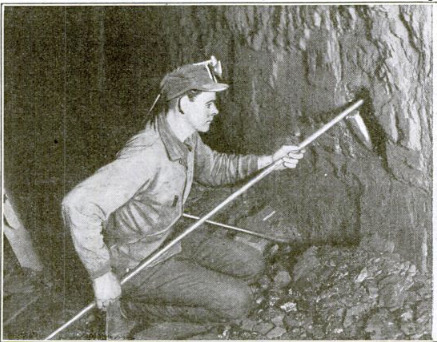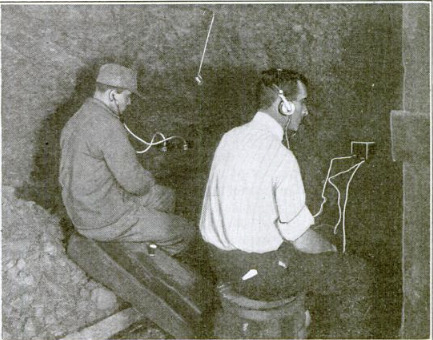The microphones and geophones, used to locate German mines during war, could be used to save miners trapped underground
Item
-
Title (Dublin Core)
-
The microphones and geophones, used to locate German mines during war, could be used to save miners trapped underground
-
Article Title and/or Image Caption (Dublin Core)
-
Trapped in the Bowels of the Earth
-
extracted text (Extract Text)
-
THERE are mines in war and mines
in peace, and so the very micro-
phones and geophones that located
German diggers with great accuracy
last year are now holding down peace
jobs in American coal-mines. By
means of these instruments sounds can
be heard and located to a depth of one
hundred and twenty feet. The micro-
phone records air waves, and the
geophone earth waves.
These two instruments are very
much alike in the matter of construc-
tion. The receivers that fit over the
ears of the listeners are very much like
the ordinary telephone receivers in an
electric circuit. Two diaphragms rest
on the ground. The smallest change
in sound waves, such as that produced
by the hammering of a miner trapped
in the earth below, alters the resistance
in the circuit and hence the current.
“This causes the sound to be reproduced
in the receivers.
Heretofore if an explosion occurred in
a mine, entombing the miners, rescue
work was done blindly. Of course, the
searchers were familiar with every sec-
tion of the mine, and so could guess as
to where the men would barricade
themselves in to escape the gases
in the mine and to preserve the pre-
cious air.
Often the miners were entombed for
days, as in the case of the Cherry mine
disaster in 1907. Sometimes they
were brought out in time, at other
times too late. It was simply a ques-
tion of sheer luck. If the searchers
happened to strike the right spot
the miners were saved; if not, they
suffocated.
Now a miner need only hammer at
the wall, and the listeners stationed
above will know just where he is and
direct the searchers to him. The pic-
tures shown below were taken when the
instruments were tested. The man
hammering the wall with an iron bar
played miner, and the other two men
listened.
The miner had barely stood up and
brushed the dust from his knees when
his searchers found him.
-
Language (Dublin Core)
-
eng
-
Date Issued (Dublin Core)
-
1919-05
-
pages (Bibliographic Ontology)
-
67
-
Rights (Dublin Core)
-
Public domain (Google digitized)
-
Archived by (Dublin Core)
-
Davide Donà
-
Marco Bortolami (editor)
 Popular Science Monthly, v. 94, n. 5, 1919
Popular Science Monthly, v. 94, n. 5, 1919




